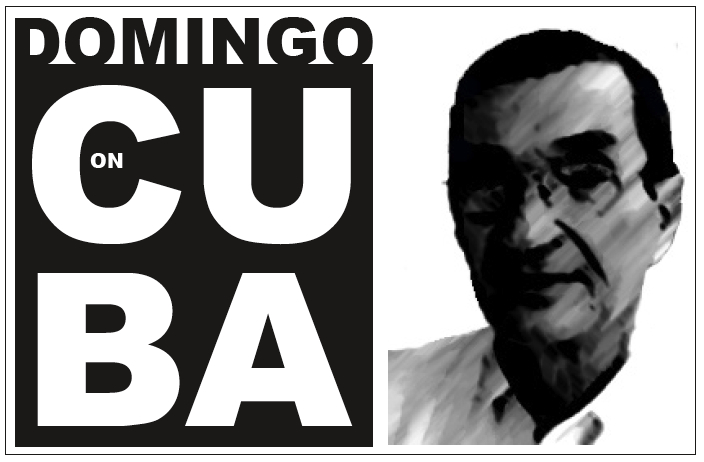To understand the arguments surrounding lawsuits in U.S. courts over “trafficking” of confiscated and yet-to-be-compensated properties in Cuba, here are some pertinent facts:
The bulk of assets expropriated from Cuban owners fell into three categories:
- A considerable sector of the upper class had been closely associated with the tyranny of Fulgencio Batista in a broad spectrum of illegal operations, ranging from embezzlement, to fraud and theft, Mafia connections, and similar operations. They abandoned Cuba by the thousands in January 1959, abandoning all their properties. Quite a few of them could rely on properties and juicy bank accounts in the United States. The revolutionary government — even before Fidel Castro was appointed prime minister — had created a Ministry of Recovery of Embezzled Goods, using it to expropriate what was considered “embezzled goods”.
- In the following months, in 1959 and 1960, waves of owners of manufacturing companies, real estate developments, large landholdings, big stores and other businesses followed the pattern of their predecessors: Total abandonment of their properties, prompting paralysis of their respective economic activities, unfunded operations, and not even money to pay salaries. In this chaotic environment, the authorities had to intervene and expropriate.
- The massive migration of the owners of big assets happened under a simple assumption: Their victorious return would happen after a short while, on the shoulders of U.S. marines, given the radicalization of the Cuban revolution since the adoption of agrarian reform and its direct confrontation with U.S. landowners. U.S. military intervention was no doubt going to occur, given the recent history of the republic.
The nationalization of properties owned by big U.S. companies was rushed through in mid-1960 amid similar sabotage by abandonment (U.S. oil companies had suspended exploration in late 1959, and ESSO refused to process Soviet crude obtained by the Cuban government in its refinery in early 1960), in hopes that a clash between the revolutionary government and the United States was imminent.
These nationalizations were made with a clear offer of compensation, to be negotiated. However, the owners refused, under direct pressure from the Eisenhower administration, given the dynamics of conflict at that point and the approaching Bay of Pigs invasion.
The Cuban authorities — during and after Fidel Castro — have reiterated, both publicly and privately, their willingness to negotiate a mutually satisfactory framework, and to consider particularly the claims of nationalized properties. The United States has not taken up the offer until now.
Which components can be considered important for Cuba in an eventual negotiation process?
- The negotiation will be with the main U.S. companies as of 1960; but not so with Cuban citizens who became, a posteriori, U.S. citizens.
- The legal environment in which these actions evolved — and the United States cannot continue to ignore this — is based on the sovereign right and jurisdiction every state has, and which Cuba used amid extreme circumstances of threats and aggressions.
- Given that we are dealing with two very different judicial systems, it is very difficult to reconcile concepts such as the “marked abandonment of properties” and the statute of limitations for claims. Neither of the two are frequently used in the plentiful lawsuits in the United States. Even so, according to various legal sources, the elements to make a case of abandonment in U.S. law are 1. an act by the owner that clearly shows that he or she has given up rights to the property; and 2. an intention that demonstrates the owner has knowingly relinquished control over it. If these elements are applied to the 1960 cases, they would qualify. The statute of limitations — applied only to testament cases in U.S. law — should be re-examined in light of the 60 years that have passed and corresponding testament documentation, if it exists.
- The bases of compensation, for the Cuban side, are resting on four key premises:
- The values to be discussed will be based on what the U.S. enterprises declared before the Cuban tax authorities regarding properties and revenues in 1958 (no outsized maximum figures). The discussion will have to take into serious consideration, Cuba’s claims resulting from 60 years or more of damaging embargo;
- Any notion of interest accumulated in the course of the years since 1960 will not be included in claims because it was the United States that rejected activating the compensation mechanisms;
- The Cuban state will hardly be able to dispense the compensation amounts in hard currency. Different variations will have to be considered, such as total or partial payments in national currency, or by issuing bonds, dedicating a percentage of export revenues, or through countervalue funds that would invest in the Cuban economy; some foreign investors in Cuba such as Meliá Hotels International have explored bilateral settlements with claimants.
- It is very improbable that the Cuban authorities will hire U.S. lawyers to immerse themselves in the labyrinth of U.S. courts, because of the bias the latter will undeniably show for the claimants. Eventually, the negotiating table will have to consist of two parties: U.S. companies with property claims and the Cuban government.
We should take into account that Cuba negotiated settlements with Canada and Spain. This was certainly on a smaller scale than U.S. claims, but it still is a valid precedent.
As Charles Dickens said: “Never attempted, never gained.” Even so, it will be a long and winding road, and more so with an administration like that of Donald J. Trump, who — I bet — will be re-elected.
Former Cuban intelligence officer Domingo Amuchastegui has lived in Miami since 1994. He writes regularly on Cuba’s internal politics, economic reform, and South Florida’s Cuban community


